How to Choose Guttering and Rainwater Goods
There are 4 steps in this guide
A rainwater guttering system can define your property’s personality and transform the look and feel of the outside of your home. So you need to put some thought into what product to install to ensure you get the finish just right.
It’s not just your home’s external appearance that could suffer from the wrong selection – it could affect the fabric of your dwelling, too.
Size, shape, material selection and placement of the gutter are all key factors that need to be considered during the design stage of your scheme.
There’s a huge selection on the market for you to pick from and your final choice will depend on your budget, style of dwelling and expected local rainfall.
Building Regulations for guttering
Rainwater is collected by a gutter and fed via a downpipe from the roof edge to the base of your home.
It can then either be collected and recycled or carried away using a soakaway, watercourse or surface water/combined sewer. Surface water must not be discharged into a foul drain or foul sewer.
All the requirements for disposal of rainwater are outlined in the Building Regulations (Approved Document H). It’s essentially in place to ensure that rainwater does not damage the foundations of a building or any adjacent structures.
If you’re building from scratch, speak to your local authority, who can advise you on their specific requirements. Your building control officer can help out if you’re constructing an extension.
You do not usually need to apply for planning permission for repairs, maintenance, and very minor works – unless you’re doing external works to a listed property, in which case you’re likely to require listed building consent.
How to get the gutter flow right
Your gutter’s capacity must be large enough to carry the maximum expected flow of water at any point in the system.
In the UK, rainfall intensity is measured in litres per second per square metre (l/s/m2). Building Regs Doc H3 show varying intensities throughout the UK, but a rate of 0.021 l/s/m2 is the widely accepted figure.
The flow depends on the area of the roof surface being drained, whether it’s flat or pitched, plus the angle of the pitch.
The calculation for working out the effective roof area (ERA) is as follows:
- L = Length of roof
- H = Vertical height of roof
- W= Width of roof section
- ERA (m2) = (H/2 + W) x L
The gutter flow rate is measured in litres per second. To work out the capacity your home requires, multiply the ERA by the anticipated rainfall intensity.
If you are in any doubt as to the capacity of gutter your home requires and how and where the gutters and downpipes should be placed, seek advice from a specialist.
What material should I use for my guttering?
It may sound obvious, but the rainwater goods you choose must reflect the look and feel of your dwelling’s exterior.
Installing chunky black guttering against a contemporary white rendered home is going to look out of place. Your budget will also be a deciding factor in your final selection.
Plastic guttering
If finances are tight, consider PVCu systems. They’re relatively cheap and work well on modern properties, but they do have a shorter life expectancy than other products.
They’re weaker and more vulnerable to damage from UV rays, which can make plastic go brittle, so they can split.
“Glass reinforced plastic (GRP) offers a durable and versatile rainwater system,” says Diana White at Yeoman Rainguard. It’s a step up from standard plastics and can be moulded and styled according to your requirements.
It can be designed to mimic guttering systems found on older properties, making it a great replacement for cast iron on some period homes, as it costs a fraction of the price and is lightweight so it’s easier to install.
It’s also UV stable so it won’t fade and can last up to 25 years before you need to repaint.
Metal guttering
Aluminium & steel guttering
Like GRP, aluminium guttering is durable and lightweight. “It’s one of the more expensive options, but it’s robust, will never rust and can be polyester powder coated in a range of different shades,” says Daniel Hopkins at Rainclear Systems.
It normally lasts for up to 25 years and can suit both contemporary and traditional-style properties.
“Steel is probably the most affordable and cost effective of the metal ranges,” says Daniel. What’s more, it weighs very little (making it easy to work with and install) but is still incredibly strong.
It’s suited to modern builds and can last up to 20-25 years. It needs to be maintained regularly to avoid rusting.
Zinc guttering
Zinc rainwater goods can make a bold statement on a contemporary home. They weather from a shiny silver into an almost lead-like colour, so they’re ideal for use on stone houses.
The other pros of a zinc gutter are that it will last up to 30-50 years and requires very little energy to manufacture, making it a good choice for those wanting to construct a home with low embodied energy.
Cast iron guttering
If renovating a listed home, you may be required to use cast iron guttering. “It’s immensely strong and long lasting and looks superb on traditional properties,” says Daniel.
It is one of the most expensive materials compared to other metals. It’s also one of the heaviest, making fitting a bit more awkward.
Cast iron needs to be maintained regularly and covered with a bituminous paint every five years. The longevity of the material tends to outweigh the negatives.
Copper guttering
Copper gutters are versatile, durable and attractive and look great on traditional properties, but they are also one of the most expensive specifications. However, they offer a wide range of advantages that are well worth the outlay – including rust resistance and minimal upkeep requirements.
“Over time, copper gutters will develop a patina that provides protection against corrosion,” says Rosalie Hoare at Coppa Gutta. “This also acts as an algaecide and fungicide, so it keeps growths, such as moss and lichen, to a minimum and ensures gutters stay clear.”
Furthermore, copper is a 100% recyclable material.
Profile options for guttering
The most common profiles of guttering are ogee, square, round and deep flow. An ogee gutter is ideally suited to period homes. It has a bevelled side and flat bottom, similar to square profile products.
Square gutters offer a contemporary look so would be more appropriate to a modern house. Although these more angular shapes naturally provide guttering with a higher capacity, half round gutters are usually much cheaper.
If a standard half round gutter is too shallow to cope with your home’s requirements, consider a deep flow version instead.
How to maintain your gutters
How often your rainwater goods needs to be repainted or replaced will depend on the material you’re specified. Speak to the manufacturer for detailed further guidance.
You will need to inspect the system for blockages of leaves and other debris at least twice a year.
If you neglect this upkeep, rainwater may not drain away efficiently and could penetrate the structure of the house, causing damp and leaks.
Also, inspect fascia and soffit boards for rotten and damp areas, and if necessary, remove and replace.
Published: July 2013































































































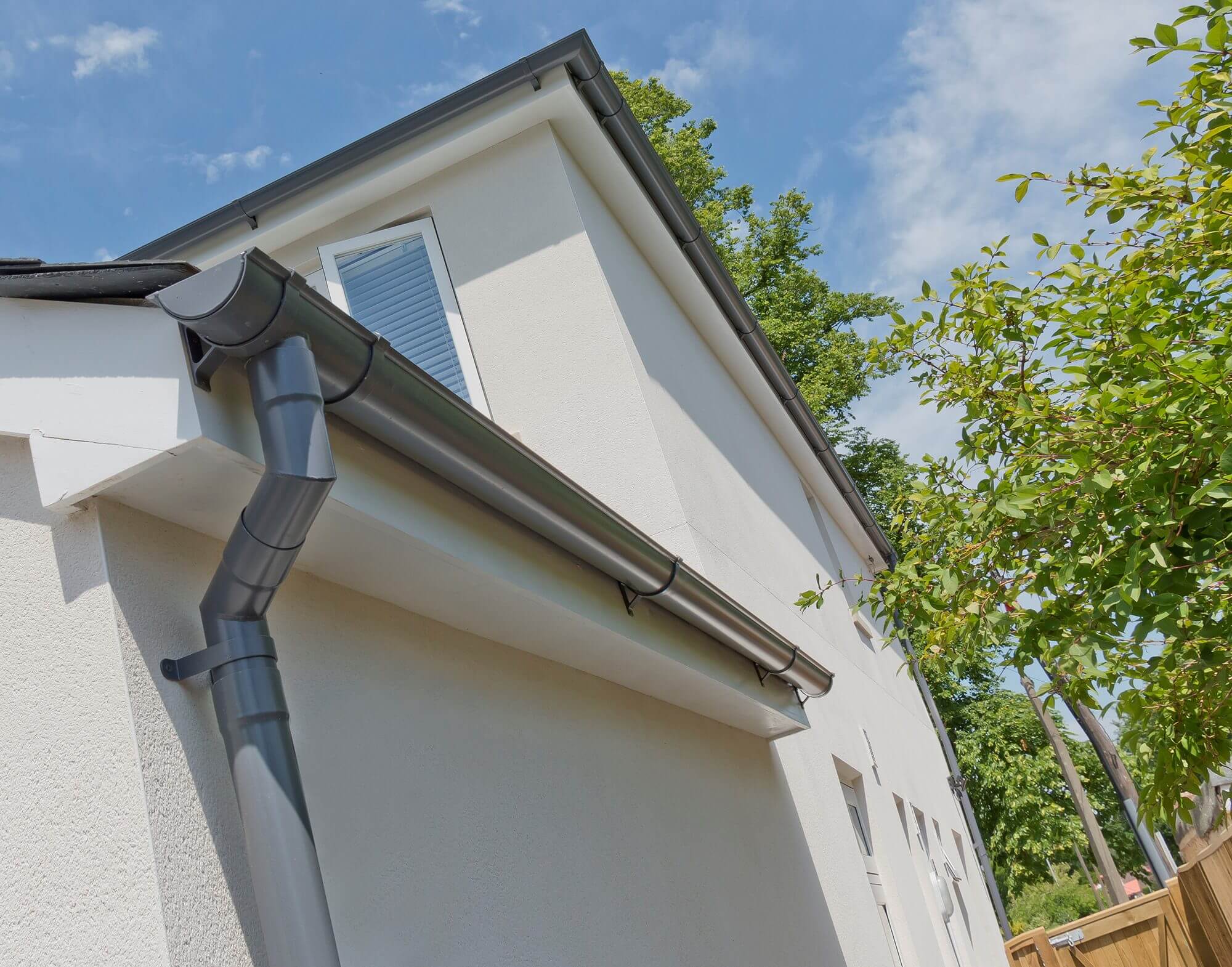
 Login/register to save Article for later
Login/register to save Article for later




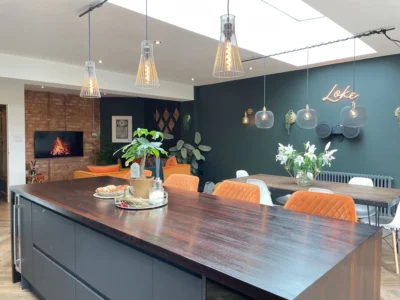
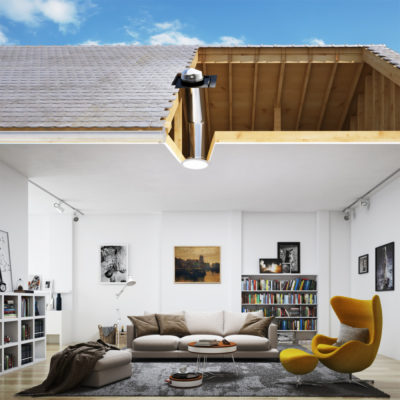
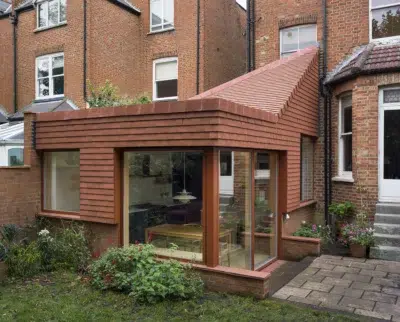
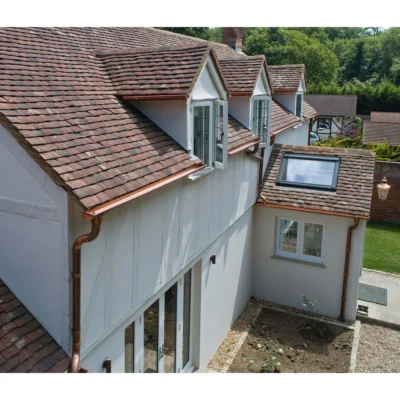





Comments are closed.